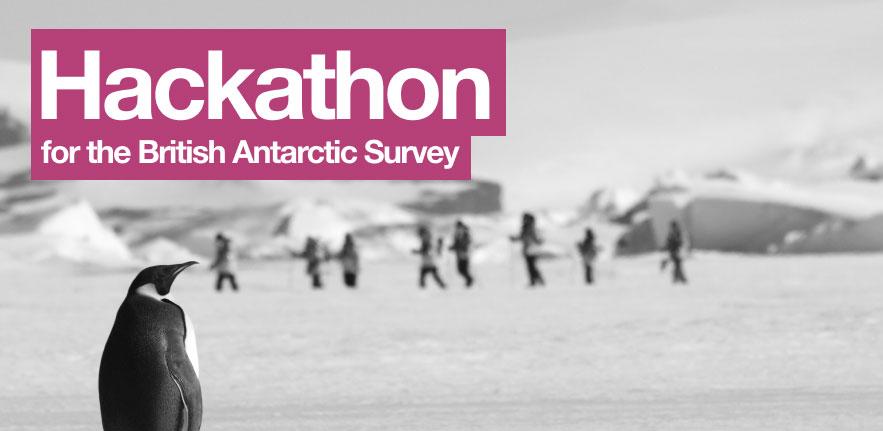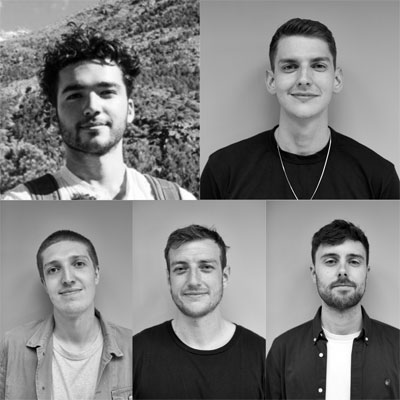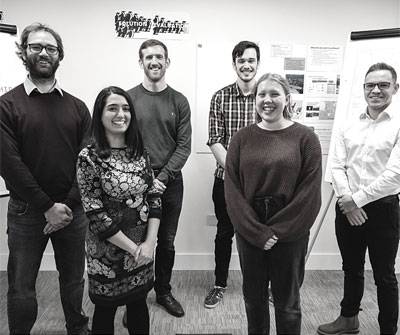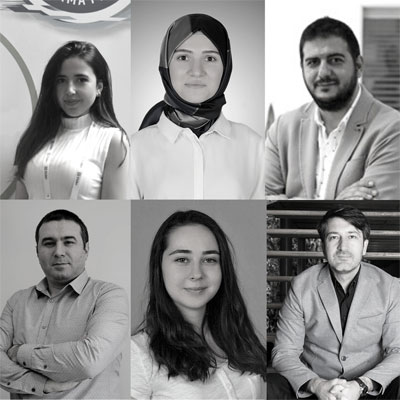
Submitted by H. Hutton on Wed, 15/12/2021 - 08:47
15 December 2021 - A hackathon involving some highly innovative minds from across business and academia has resulted in the announcement of three winning entries to help decarbonise research stations for the British Antarctic Survey.
The University of Cambridge Institute for Sustainability Leadership (CISL) in collaboration with the British Antarctic Survey (BAS) set technical challenges to a global community of innovators to find innovative and resilient solutions to address three challenge categories: energy reduction and generation, backup systems and energy storage.
Nine teams of innovators participated in the hackathon to rapidly develop solutions to help BAS decarbonise its Rothera Research Station on the Antarctic Peninsula in one of the most extreme environments on Earth, supporting the Net Zero transition.
A panel of expert judges has today revealed its winning teams from across the world:
- Greenpixie: a London-based start-up who focus on measuring and reducing digital carbon footprints
- Cambridge Design Partnership: an end-to-end innovation partner, building breakthrough products and services for clients in the consumer, healthcare and industrial markets. CDP is 100% owned by its employees.
- ODTU teknokent: a leading Turkish University collaborated with product design and manufacturer YEDIC Engineering, Momentum R&D and Nanovatif Materials Technologies to form a team.
Professor Dame Jane Francis, Director of British Antarctic Survey said:
“We carry out vital scientific research on the impact of climate change in Antarctica and beyond. By replacing old inefficient infrastructure with sustainable technologies, our ambition is to reduce carbon emissions in our Antarctic stations and Cambridge office to net zero by 2040.
There are many challenges ahead, however we have a history of working in collaboration to solve difficult issues. We are grateful to all the teams who took part and to the winners for their innovative ideas. We look forward to exploring further with them if and how their ideas might help us find solutions to reach net zero as quickly as possible.”
Through the course of the Hackathon teams were provided with detailed information on operations at BAS’s largest Antarctic facility, including the existing measures in place, and the limitations of existing technologies.
Greenpixie, came up with a series of digital solutions to facilitate and encourage further efficiency. The solutions included energy saving through optimising the digital hardware and software that BAS use across their estate both in Antarctica and Cambridge. Solutions ranged from utilising waste heat generated by servers to intelligent load balancing, to better optimisation of data transfer. Energy efficiency opportunities were also identified in behavioural changes and day to day energy management through the use of smart grids.
Rory Brown, Director of sustainability at Greenpixie said:
“We really believe that innovation and progress occur when different minds come together to solve different issues. That’s why we exist as a company, and we wanted to apply ourselves and the knowledge we’ve gained along the way to a novel environment. What’s more novel than working on BAS net zero plan? We will draw on our experience in the hackathon in the way that we approach problems on a day-to-day basis. We will certainly be searching out more unexpected places where our knowledge and skills can make an impact.”
Cambridge Design Partnership came up with the winning energy storage solution. It focused on a creative combination of proven technologies in order to ensure resilience and reliability. This included using distributed phase-change materials(heat is absorbed or released when the material changes from solid to liquid and vice versa or when the internal structure of the material changes) to store large amounts of heat in the building envelope, and demand-side management measures to better match heat and electricity demand to the renewable supply.
Matt Morris, sustainability lead at Cambridge Design Partnership said:
“We see a role for innovation in finding creative solutions to help close the gap between global sustainability goals and our current trajectory – the ‘implementation gap.’ BAS’ challenge is a perfect example of this, and we wanted to use our approach to problem-solving to help uncover solutions that might not be obvious using conventional methods. We’d love to explore ways to help BAS take our ideas further – more analysis is needed to be confident, but we think there’s potential.”
The final winning team, coordinated by Turkish university ODTU teknokent, proposed an innovative approach to maximise potential for wind energy through wind turbines that are resistant to extreme weather conditions, feeding in to an electrolyser.
Gizem Damla Ateşağaoğlu, Business Development and Project Manager at Yedic Engineeringsaid:
“As companies working on renewable energy technologies, our goal is to make a difference in the future of our world. This hackathon was an opportunity for that. The chance of overcoming a challenge about energy in a place so far from us is exciting. We are delighted to be a part of it.”
BAS’s five Antarctic and sub-Antarctic Research Stations deliver and enable world-leading interdisciplinary research in the Polar Regions. It’s skilled science and support staff based in Cambridge, Antarctica and the Arctic, work together to deliver research within the Polar Regions to advance our understanding of the Earth and our impact on it. The Research Stations, situated thousands of miles away from towns and cities, present significant challenges when it comes to achieving net zero, such as massive seasonal variations in weather, and working alongside a host of protected species. It is anticipated that existing technologies such as renewable energy, energy storage and heat recovery systems can contribute significantly towards their target of achieving net zero by 2040, but an innovative approach is needed to fully decarbonise.
Eithne George, Programme Director, University of Cambridge Institute for Sustainability Leadership said:
“We know that often innovation arises from very constrained situations or specific challenges – take for instance the solar panel, invented by NASA in the space race. Through this Hackathon we wanted to bring the best thinking from a diverse global innovation community to break new ground in the race to decarbonise our economy, in ways that tread lightly on our remaining planetary resources and are equitable and inclusive. The solutions put forward by the teams have challenged BAS’s thinking in their approach to decarbonisation, and we look forward to seeing them develop further.”
Situated on Adelaide Island to the west of the Antarctic Peninsula, Rothera supports a wide range of BAS, UK university and international collaborative science programmes. The station is 1,860km south of the Falkland Islands and 1,630km south-east of Punta Arenas, Chile. Adelaide island, which is 140km long, is mountainous and heavily glaciated. Its highest peak is 2,565 metres.
Each of the winning teams will receive mentorship provided through the CISL Accelerator to further developed their concept.
Winner case studies
The competition was set out into three challenge categories: energy generation, storage solutions and backup systems.
Challenge 1: Energy reduction and generation
Winners: Greenpixie
Greenpixie is a London-based start-up that focuses on measuring and reducing digital carbon footprints.
Why did you sign up to take part?
We signed up for the hackathon for a few reasons. Firstly so that different parts of the company could work closely together on a different issue than we’re used to. We also really believe that innovation and progress occur when different minds come together to solve different issues. That’s why we exist as a company, but as we are always working on the same issue, we wanted to apply ourselves and the knowledge we’ve gained along the way to a novel environment. What’s more novel than working on BAS’ net zero plan?
Also, we had just been involved in CISL’s Manufacturing for Good accelerator and were keen to dig deeper into the great community.
You were the winners of the challenge 1 - how to radically reduce energy use and decarbonise the power generation system. Can you give a summary of the solutions you developed?
We suggested a series of digital solutions to facilitate and encourage further efficiencies within the already excellent infrastructure that exists on site. Our solutions did not propose to transport, install, or generate any new physical products, mitigating the issue of working in environments that can reach -40c. This also means that the solutions can be maintained easily, are continually improving, and can be utilised by the existing tech team on-site and back in Cambridge. As well as targeting the Net Zero plan, a side effect of our solution also means the potential to transfer more data to and from the research station within the existing (and as everyone that’s been there told us, - painfully slow!) bandwidth.
How did you approach this challenge as a team?
As a team, we took some time at the beginning to come up with solutions and ideas individually. We then brought these to the table and discussed, joined, and expanded on them, before building out these ideas as a group. Towards the end of the hack, we took a reflective period to iron out any issues with our solutions and to think about the delivery implications if they were to be implemented.
What was the most interesting thing about taking part in the hackathon?
Outside of working on the solutions to such unique constraints, the most interesting part of the hackathon was talking to so many people who have spent their lives studying at the most fascinating frontier on earth. Hearing first-hand experiences of life on station was completely riveting – these are not the people you meet down the pub on a normal weekend! And we still have a hundred questions left to ask them.
It was also great to meet and network with the other entrants, who came from interesting backgrounds. It was a privilege to be on the same page as them.
What do you hope to take away from your participation in the hackathon?
We will draw on our experience in the hackathon in the way that we approach problems on a day-to-day basis. We will certainly be searching out more unexpected places where our knowledge and skills can make an impact. We’re also looking forward to further conversations with CISL, BAS and our fellow hackers.
Challenge 2: Energy storage
Winner: Cambridge Design Partnership
Cambridge Design Partnership are a Cambridge and US based company which is 100% owned by its employees and works on innovation design and acceleration.
Why did you sign up to take part?
CDP’s mission is ‘Improving lives through innovation.' We see a role for innovation in finding creative solutions to help close the gap between global sustainability goals and our current trajectory – the ‘implementation gap.’ BAS’ challenge is a perfect example of this, and we wanted to use our approach to problem-solving to help uncover solutions that might not be obvious using conventional methods.
Can you give a summary of the solutions you developed to help BAS achieve net zero?
Our challenge was to find energy storage solutions. Our analysis of information provided by BAS revealed that Rothera station’s energy demand profile was characterised by high and variable heat demand (around two-thirds of the total energy demand), so we focused on storing heat. Given BAS’ emphasis on resilience and reliability, we prioritised established, simple technologies. This led to several potential solutions, from using distributed phase-change materials to store large amounts of heat in the building envelope to demand-side management measures to better match heat and electricity demand to the renewable supply - all aiming to reduce investment cost and reliance on more expensive and technologically challenging forms of energy storage.
How did you approach this challenge as a team?
CDP has a methodology for generating solutions to our client’s challenges. First, we analysed the problem, aiming to discover focus areas that would benefit BAS. Then we used our multidisciplinary team to generate as many solutions as possible in the chosen focus areas, followed by a structured evaluation to decide which solutions to pursue. Finally, we conducted targeted research and analysis to provide evidence that the solutions had the potential to solve BAS’s problems. It was tough to fit into a one-day event, but the team’s energy and enthusiasm carried us through.
What was the most interesting thing about taking part in the hackathon?
We enjoyed learning more about BAS’s operations in Antarctica, their ambitious sustainability plans, and the unique challenges of achieving them in such a demanding environment. A highly constrained problem like this is difficult to solve but, when they do come, the solutions can be the most interesting and rewarding to work on.
What do you hope to take away/next steps from your involvement in the event?
We’d love to explore ways to help BAS take our ideas further – more analysis is needed to be confident, but we think there’s potential. There’s only so much you can do in a day’s hackathon!
Challenge 3: Back-up energy
Winner: ODTU teknokent
Leading Turkish University ODTU teknokent collaborated with product design and manufacturer YEDIC Engineering, Momentum R&D and Nanovatif Materials Technologies to form a team.
Why did you sign up to take part?
As companies working on renewable energy technologies, our goal is to make a difference in the future of our world. This hackathon was an opportunity for that. The chance of overcoming a challenge about energy in a place too far from us is exciting. Thus, we are delighted to be a part of it.
You were working on the challenge to come up with back up energy solutions. Can you give a summary of the solutions you developed to help BAS achieve net zero?
We are planning to build wind turbines and to obtain electrical energy from them since the wind speed of the area is sufficient. Blade heaters will be used to prevent icing at the blades of the turbines. Our aim is to use the energy generated from the turbines to run an electrolyser. How did you approach this challenge as a team? Our team consists of 6 members from 3 companies: Yedic Engineering, Momentum R&D and Nanovatif Materials Technologies. We created an idea for the challenge through the main professions of the companies in our team. Our approach is to draw on the expertise of all team members to deliver a useful outcome.
What was the most interesting thing about taking part in the hackathon?
The most interesting thing about the hackathon for us to be able to meet everyone involved and the judges and to convey our ideas. In addition, getting prepared to the presentation with our team during the day was enjoying.
What do you hope to take away/next steps from your involvement in the event?
We will take the technical data we have worked on during the hackathon to the next level.







